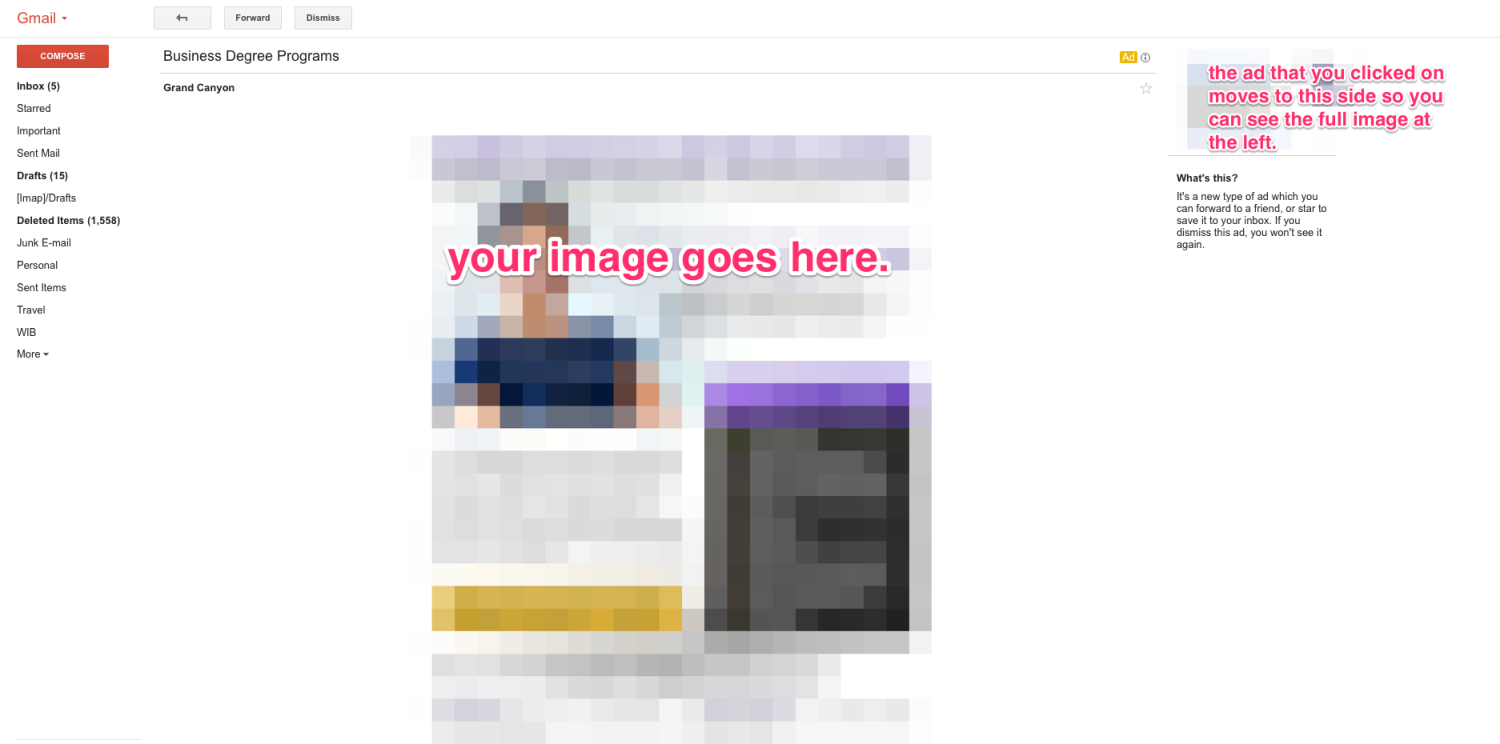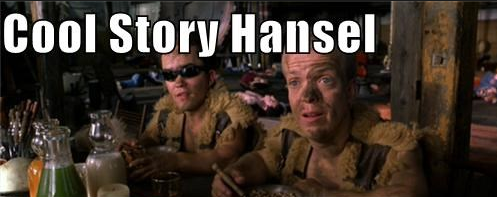Wishpond is happy to publish this guest post from Jacob Baadsgaard.
PPC advertising is one of the best ways to drive the right traffic to the right landing page.
The problem is, because PPC is such a good way to drive qualified, high-intent traffic to your landing pages, it’s also an extremely competitive and expensive way to get clicks.
For this reason, many companies struggle to turn a profit off of PPC.
Fortunately, there are a variety of ways to get more (and cheaper) traffic from your PPC budget. You can’t “set it and forget it,” but, with a little extra work, you can get incredible results from PPC.
Here are 5 ways to get more PPC landing page traffic from ads:
1. Gmail-Sponsored Promotions
Last year, Google released a new advertising option called Gmail-sponsored promotions (GSPs), which allow you to advertise to potential customers using the content of their emails.

So, if I send my wife an email about the surprise trip we’re planning for the kids, you can use that information to put an ad in my inbox about vacation options.
Since this option is so new, there’s a good chance that your competition hasn’t started using it—that makes it an awesome opportunity to get cheap clicks!
And, even if your competitors are using this strategy, at least you will be, too.
2. Mobile Optimization
In 2015, mobile became the most-used device for Internet searches.

With this change, mobile has become the primary device your audience will use to see and interact with your ads and landing pages.
As a result, mobile ad spend is projected to top $100 billion in 2016 and should account for over 50% of all PPC ad spend in 2016.
That means over half of your PPC clicks will take place on a mobile device.
Mobile advertising is very different from desktop advertising, so the earlier you adopt an effective mobile PPC strategy, the more clicks you will steal from your competition.
For example, on mobile, it’s important for your ads to place in positions 1-3. Otherwise, the odds of having your ad seen are fairly low (Google’s recent desktop update makes this important for desktop ads as well).
Thankfully, Google makes it fairly easy to see how your ads are performing on mobile. To take a look at this, simply segment your data by device and compare your click-through rates, position, conversion rates, etc. against your desktop KPIs.
In addition to optimizing your PPC campaigns for mobile, it’s also critical to design your landing pages to create a great mobile experience.
Fortunately, a good landing page platform like Wishpond makes designing for mobile very easy.
Responsive web design is not enough anymore, your landing pages must be designed for mobile users. If they aren’t, Google actually penalizes you, making it harder to get your ads into position 1-3 and reducing traffic to your landing page.
3. Retargeting
There are a lot of reasons why people leave your landing page without converting. And, most of the time it has little to do with your page or your offer!
Unfortunately, when someone leaves your landing page, they usually don’t come back.
How frustrating! You went to all that effort and expense getting them onto your page and then they just leave?
But what if there was a way to bring them back?
Fortunately, with retargeting, you can put a cookie on your visitor’s browser of your and make sure your brand stays in front of those “lost” visitors.
Essentially, you can use retargeting to have your ads follow your “lost” traffic around, reminding them of how awesome your brand is and how relevant your service is to their problem.
This is an incredibly effective way to improve your PPC advertising performance. For example, last year we used retargeting to increase a client’s sales volume by 126%!
Since retargeting clicks usually cost next-to-nothing, almost every PPC campaign performs better when you add retargeting.
4. In-Market Audiences
Ever wonder if display ads are actually effective? Statistically speaking, you’re more likely to have a heart attack than click on a banner ad.
That doesn’t seem very effective to me.
As mortifying as this statistic is, it shouldn’t come as a surprise. Most display ads are so poorly targeted that they are completely irrelevant to their audience.
And, paying to get in front of a completely uninterested audience is good way to waste a lot of money.
So, the question is: How can you get your ad to display in front of a relevant, interested audience?
Enter Google’s in-market audiences.
In-market audiences target users within specific verticals who are currently in a buying cycle. In other words, they allow you to target the people you want your ads to be in front of.
For example, let’s say I’m researching that family vacation. You can use in-market audiences to target me with display ads about spectacular destinations. Since I’m already looking for a great getaway, I’m much more likely to notice and click on your ad.

It’s a nice idea, but does it work?
Well, companies like Wayfair and Toll Brothers have seen 20% improvements in ad response rates and 50% lower acquisition costs.
When combined with remarketing, in-market audience targeting increased these companies’ click-through-rates by 200%! Using in-market audiences is fairly easy, so give it a try!
5. Put Your Budget Where It Counts
No matter which PPC strategy you use, the key to successful PPC is to constantly track and evaluate campaign performance.
At Disruptive, we’ve audited over 2,000 AdWords accounts and discovered that only 29% of AdWords campaigns have their conversion tracking set up effectively.
Of the accounts with effective tracking in place, the average account wastes 75.8% of their ad spend on search terms that never convert:

That means the majority of your ad budget is going towards clicks that will never, ever convert.
To fix this problem, you need know which tactics and keywords are producing results and focus your spend on what’s working.
At a minimum, you should be in the 29% that effectively tracks conversions. But ideally, you should track your marketing spend from click-to-close.
An ad campaign can drive a lot of clicks and even conversions, but if it isn’t driving sales, it isn’t worth your money.
Eliminating non-productive PPC spend frees up a lot of money you can use to drive more productive clicks to your landing page, which in turn improves both click volume and sales!
Using this approach, we’ve been able to 2x converted clicks and 3x market share for our clients—all while reducing their PPC spend!
Conclusion
To run a profitable PPC campaign, you may need to try a lot of different ideas out. With enough creativity and determination, you can almost always find something that provides truly awesome results!
So, if you need more conversions and more qualified landing page traffic, try out these 5 ideas. Let me know how they work in the comments!
About the author:

Jacob is a passionate entrepreneur on a mission to help businesses achieve online marketing success. As the Founder & CEO of Disruptive Advertising, Jacob has created an award-winning, world-class organization that has helped hundreds of businesses grow using pay-per-click advertising and conversion rate optimization.

